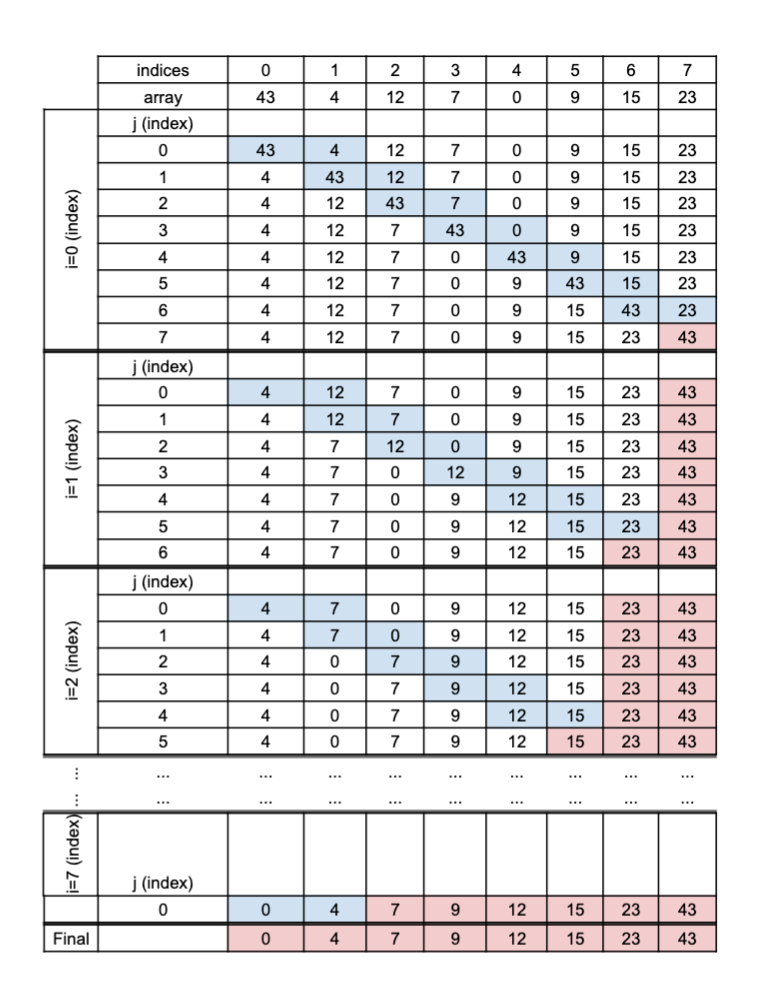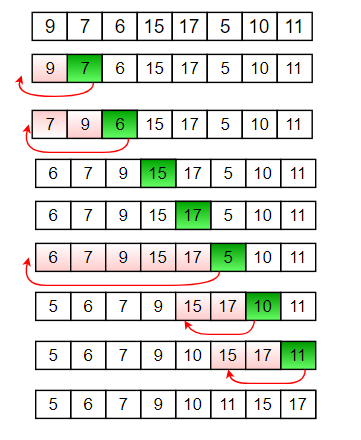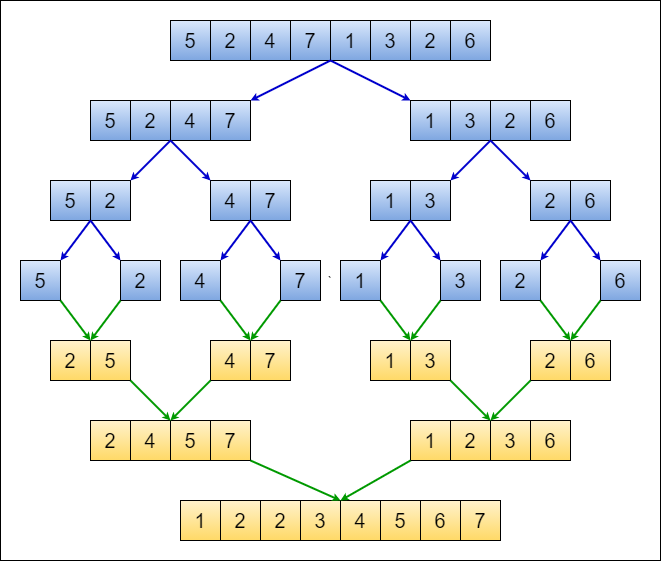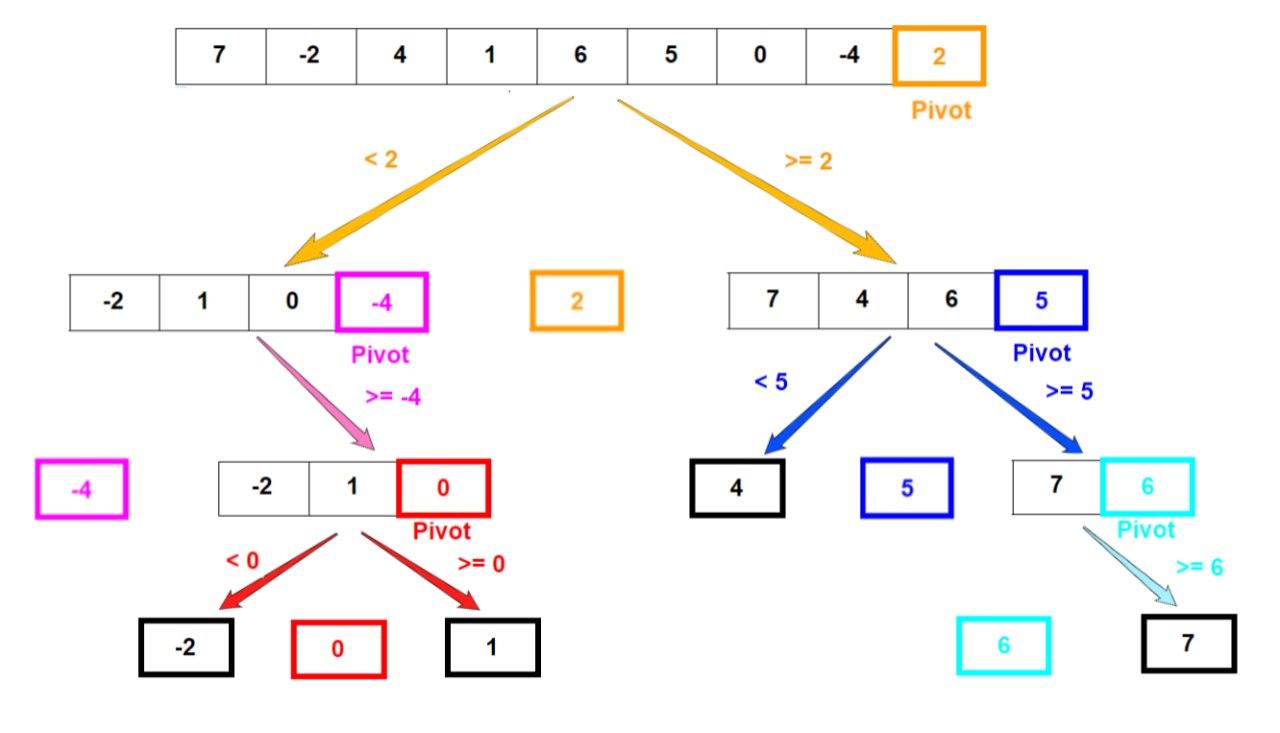Selection Sort
This way of sorting is simplest to imagine. We tend to utilize the principle of selection sort in our day-to-day lives. Assume that we wish to sort a series of values in ascending order. Intuitvely, we will first traverse through an array an select the smallest element and keep it aside. From the remaining elements in the array we will again repeat the steps to find and keep the smallest element aside.
Example of Selection Sort:
Conside the following array consisting of 6 elements: [23, 4, 56, 1, 78, 2]
The following flowchart demonstrates the flow of selection sort algorithm/method.
Link to animation for selection sort - https://yongdanielliang.github.io/animation/web/SelectionSortNew.html
void selectionSort(int arr[], int n){
int minIdx = 0;
for (int i = 0; i < n-1; i++){
minIdx = i;
for (int j = i+1; j < n; j++){
if (arr[j] < arr[minIdx]){
minIdx = j;
}
}
swap(&arr[minIdx], &arr[i]);
}
}
Bubble Sort
Bubble sort is a simple sorting algorithm that repeatedly iterates through an array, compares adjacent elements and swaps them if they are in the wrong order (assume ascending). The iteration through the array is repeated until the array is sorted.Example of Bubble Sort and Flowchart:

Link to animation for bubble sort - https://yongdanielliang.github.io/animation/web/BubbleSortNew.html
void bubbleSort(int arr[], int n){
for (int i = 0; i < n-1; i++){
for (int j = 0; j < n-i-1; j++){
if (arr[j] > arr[j+1]){
swap(&arr[j], &arr[j+1]);
}
}
}
}
Insertion Sort
Insertion sort works similar to the way people sort playing cards in their hands. To sort an array of size n in ascending order:Example of Insertion Sort and Flowchart:
 Image source: GeeksForGeeks
Image source: GeeksForGeeks
Link to animation for insertion sort - https://yongdanielliang.github.io/animation/web/InsertionSortNew.html
void insertionSort(int arr[], int n){
int key = 0;
int j = 0;
for (int i = 1; i < n; i++) {
key = arr[i];
j = i - 1;
while (j >= 0 && arr[j] > key) {
arr[j + 1] = arr[j];
j = j - 1;
}
arr[j + 1] = key;
}
}
Merge Sort
The aforesaid sorting techniques require nearly n2 number of steps for input size n. Merge Sort technique is comparitvely more efficient. Similar to Binary Search it is a Divide and Conquer algorithm. To this end, it divides the input array into two halves. Each half is sorted by recursively dividing them individually into two halves. Once the entire array is divided into subarrays of size 1, they are merged into two sorted (ascensding) halves. Described below is the algorithm for merge sort technique.
merge_sort(arr[], left_index, right_index)
If right_index > left_index
 Image source: https://levelup.gitconnected.com/
Image source: https://levelup.gitconnected.com/
The number of steps required for merge sort for input size n is:
Link to animation for Merge sort - Link to hackerearth.
void merge(int arr[], int left_index, int middle_index, int right_index)
{
int sz_left_arr = middle_index - left_index + 1;
int sz_right_arr = right_index - middle_index;
/* create temporary arrays */
int left_arr[sz_left_arr], right_arr[sz_right_arr];
/* Copy data to left_arr[] and right_arr[] */
for (int i = 0; i < sz_left_arr; i++)
left_arr[i] = arr[left_index + i];
for (int j = 0; j < sz_right_arr; j++)
right_arr[j] = arr[middle_index + 1 + j];
int i, j, k;
/* Merge the temp arrays back into arr[l..r]*/
i = 0; /* starting index of left_arr */
j = 0; /* starting index of right_arr */
k = left_index; /* starting index of merged subarray */
while (i < sz_left_arr && j < sz_right_arr) {
if (left_arr[i] <= right_arr[j]) {
arr[k] = left_arr[i];
i++;
}
else {
arr[k] = right_arr[j];
j++;
}
k++;
}
/* Copy the remaining elements of left_arr[], if there
are any */
while (i < sz_left_arr) {
arr[k] = left_arr[i];
i++;
k++;
}
/* Copy the remaining elements of right_arr[], if there
are any */
while (j < sz_right_arr) {
arr[k] = right_arr[j];
j++;
k++;
}
}
void merge_sort_func(int arr[], int left_index, int right_index)
{
if (left_index < right_index) {
int middle_index = (left_index + right_index) / 2;
/*recursively sort first and second halves*/
merge_sort_func(arr, left_index, middle_index);
merge_sort_func(arr, middle_index + 1, right_index);
merge(arr, left_index, middle_index, right_index);
}
}
Quick Sort
Similar to the Merge Sort technique, Quick Sort employs the Divide and Conquer algorithm. To this end, it picks an element as pivot and partitions the given array around the picked pivot. Each partition is then recursively processed by further partitioning (into subpartitions) around a newly selected pivot (from the partition). The left subpartition will have elements smaller than the pivot. The right subpartition will have elements greater than the pivot.
The pivot can be selected in multiple ways:
 Image source: https://stackabuse.com/quicksort-in-javascript/
Image source: https://stackabuse.com/quicksort-in-javascript/
Link to animation for Quick sort - Link to hackerearth.
Described below is the algorithm for quick sort technique.quick_sort(arr[], left_index, right_index)
If right_index > left_index